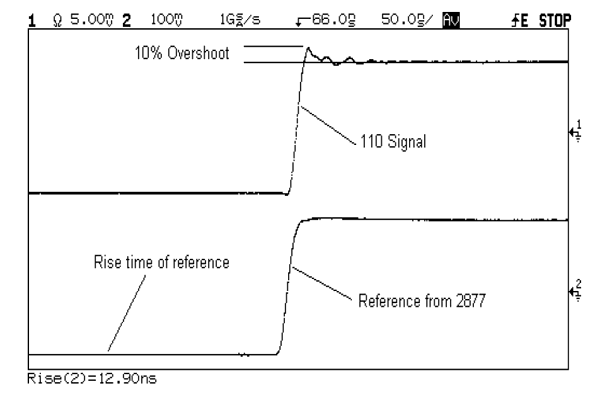The useable rise time of a current transformer is defined with respect to a transition from one current level to another. If the difference between the levels is defined as 100%, then the rise time is the interval from 10% to 90% of the transition.
When a fast-rising current transition is applied to a current transformer, it is typical for the output to either overshoot and ring, or rise more slowly than the input current pulse. If the overshoot or ringing amplitude is less than 10% of the transition, the output is considered useable. Therefore, the fastest 10 to 90% transition that causes no more than 10% overshoot and ringing is known as the useable rise time. If the output does not overshoot or ring, then the output voltage rise time becomes the useable rise time.
The figure below illustrates this for a Pearson Model 110. A faster Model 2877 is used to show the input current wave shape on channel 2. The oscilloscope has measured the rise time of channel 2 as 12.90 ns. This is the useable rise time because it has caused a 10% overshoot in the Model 110 output voltage signal shown in channel 1.
In choosing a current monitor, the specified useable rise time should be less than the rise-time of the current pulse to be viewed.

